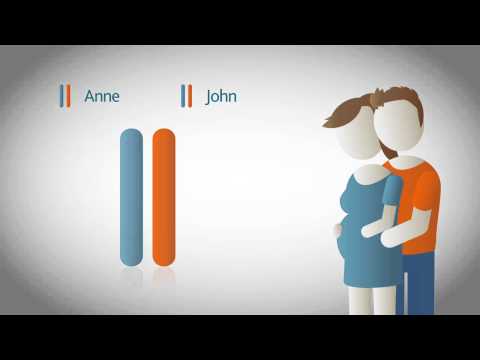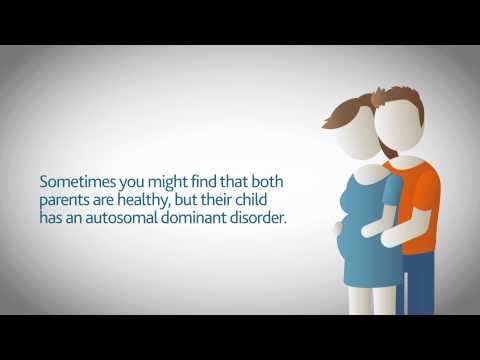When we dig into the world of genetics, we’re often met with some jaw-dropping revelations about where we come from. Autosomal traits play a crucial role in shaping our inheritance path, influencing everything from our physical appearance to our health predisposition. Understanding these traits not only enhances our knowledge of genetics but also empowers us to embrace our unique characteristics. So, let’s flex those mental muscles and dive deep into the intricate dance of autosomal genetics.

Understanding Autosomal Genetics
Autosomal traits are linked to genes found on autosomes, which are pairs of chromosomes excluding sex chromosomes. In humans, there are 22 pairs of autosomal chromosomes along with one pair that determines sex. It’s essential to grasp that these traits can show up in various physical characteristics and health conditions.
The interplay between dominant and recessive traits is at the heart of this genetic game. Dominant traits need only one copy of the associated gene to manifest, while recessive traits require two copies, one from each parent. This fundamental principle lays the groundwork for understanding how traits are passed down through generations.
Think about it: every time you catch a glimpse of your reflection, you see a mosaic of inherited traits. Whether it’s your brother’s oversized biceps or your mother’s sparkling green eyes, these attributes are carved from your genetic blueprint. Let’s lift the lid on seven key autosomal traits that showcase how they shape our inheritance path.

7 Key Autosomal Traits and Their Inheritance Patterns
Color vision deficiency, commonly referred to as color blindness, is primarily an autosomal recessive trait. Imagine needing two copies of the mutated gene from your parents, just to see the world a little differently. According to the National Eye Institute, around a whopping 8% of men and a mere 0.5% of women find themselves wrestling with this trait.
You’ve probably spotted freckles on the skin of friends or family, marking them with a unique charm. Freckles are an autosomal dominant trait, driven by the MC1R gene. Research published in Nature Genetics points out that if one parent has freckles, there’s a 50% chance that their kids will bear those cute spots too. This serves as a perfect example of how dominant genes flex their muscle in shaping our looks.
Have you ever met someone with an extra finger or toe? That condition is called polydactyly—another compelling autosomal dominant trait. This quirky trait often runs in families and highlights genetics in action. For a pop culture reference, actress Mae West famously boasted six toes on one foot, showing just how dominant genetics can be.
Cystic Fibrosis (CF) is a serious condition driven by mutations in the CFTR gene on chromosome 7. This autosomal recessive disorder means you need two copies of the faulty gene to face the challenges it brings. According to the Cystic Fibrosis Foundation, about 30,000 individuals in the U.S. live with this disorder, reminding us of the profound effects that recessive traits can have on health and life quality.
On the flip side, we have Huntington’s disease, an autosomal dominant disorder caused by a nasty mutation in the HTT gene on chromosome 4. Here’s the kicker: just inheriting one copy of this mutant gene gives you a 50% chance of developing this debilitating disease. High-profile folks like musician Marcie Muir highlight how Huntington’s impacts lives and brings it to the forefront of societal conversations.
This hereditary blood disorder, known as sickle cell anemia, arises from an autosomal recessive gene mutation. Only those inheriting two bad copies will show the disease’s symptoms. Sickle cell anemia is especially common in individuals of African descent, leading to critical discussions in public health arenas about genetic research and prevention.
Lastly, we have achondroplasia, the leading cause of dwarfism. This condition is the result of a mutation in the FGFR3 gene and is classified as an autosomal dominant trait. Notable individuals like Peter Dinklage challenge societal norms and perceptions about dwarfism, showcasing the diverse interpretations of genetic traits.

The Implications of Autosomal Traits on Personal Identity
Your autosomal traits significantly shape not just who you are physically, but also your sense of identity and family dynamics. Traits passed down through the generations can impact your health, emotional well-being, and social interactions.
Take Cystic Fibrosis, for instance. Individuals grappling with inherited conditions may encounter societal stigma that complicates their journey through life. But don’t forget, these traits also offer a sense of belonging—a connection to family history that highlights our shared genetic heritage.
Understanding these traits can be empowering. By learning more about your autosomal makeup, you can foster connections, share stories with family, and even begin to make informed decisions about your health and lifestyle.

Navigating Your Genetic Legacy
In today’s world, genetic testing is more accessible than ever before. Platforms like 23andMe and AncestryDNA empower individuals to explore their heritage, unveiling the autosomal traits that make us who we are. Who knew that digging into your genealogy could lead to such personal revelations?
This modern-day approach to family trees unravels a narrative rich with health implications that can steer your choices on diet, fitness, and even family planning. When you know what’s in your genetic cards, you can strategize your health moves, much like preparing for a bodybuilding competition.
So, as we close the chapter on this exploration of autosomal traits, remember that your genetic inheritance offers a comprehensive picture of who you are and where you come from. Whether you’re aiming for a shredded physique or just trying to navigate life’s hurdles, understanding your inheritance path equips you with the knowledge to move forward with confidence.
Taking charge of your genetics and embracing your individuality is like lifting weights at the gym; the more you know, the stronger you become. Now go out there, flex both your physical and intellectual muscles, and smash those goals!

Understanding Autosomal Traits in Your Inheritance Path
When diving into the topic of autosomal traits, it’s fascinating to see how they shape everything from our appearance to health. Did you know that nearly all human traits map back to autosomes, the non-sex chromosomes? That’s right! For instance, take something as specific as the autosomal trait affecting the bicuspid valve in some individuals, which can lead to various heart conditions. Understanding these traits offers insights into our health and reminds us that genetics play a huge role in shaping who we are, much like how cinema stars like Axel Ferrell influence popular culture.
Interesting Facts About Autosomal Inheritance
Another auto-somewhat intriguing aspect of genetics is the autosomal gene responsible for certain allergies and diseases. Ever wonder why some folks experience a burning sensation, like the one mentioned in the famously funny phrase burns When I pee? That can sometimes be linked to hereditary factors too! It’s amazing how these genetic quirks are passed down, much like the legacy of the Madtv cast, who entertained us for years. They’re all about the genes, just like various traits in our DNA.
As we consider autosomal traits, there’s room for some quirky trivia too. For example, while some people are busy choosing healthier habits, others still make unhealthy choices, underscoring the impact of inherited traits. And speaking of quirky, did you know that even the seemingly random hobby of collecting classic cars, like the Toyota Stout, can sometimes be influenced by familial interests? Traits aren’t just in our genes; they seep into our passions and preferences, too. So next time you’re reaching for a hairbrush, think about the genetics behind why you chose that over something else—it could be more than just coincidence!
Autosomal Traits Influence Lifestyle Choices
Now, let’s shift gears a little. Have you noticed how popular Vapes have become? Surprisingly, genetic predispositions may play roles in why some people are drawn to smoking behaviors, including the use of vaping devices. Genetics often intertwines with our lifestyle choices, shaping tendencies toward certain behaviors—just as the immersive world of a Sword Art online game captivates its players. From the traits that define us to the smaller nuances that direct our whims, autosomal traits truly offer a fascinating exploration of human genetics.
So, whether it’s the simple act of choosing a hobby or coping with health traits, autosomal genes are the quiet architects of our lives. Embracing this understanding makes it all the more interesting to learn about our inheritance path.



























